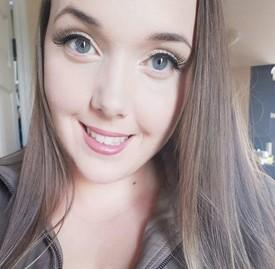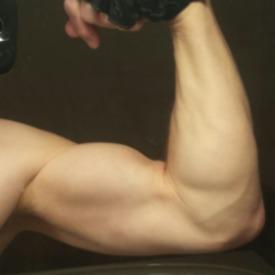We are pleased to announce that today, March 4, 2025, an updated Rich Text Editor has been introduced in the MyFitnessPal Community. To learn more about the changes, please click here. We look forward to sharing this new feature with you!
Dieting- what should you eat?

jjusticevfs
Posts: 2 Member
I am overweight and I am looking to cut weight. The problem is to be honest, I really don't know what to eat. I have ate chicken and rice before, but I would like to have a variety in my meal prepping so that I don't go back to just eating whatever.
1
Replies
-
I would suggest that you eat lean protein, vegetables, fruit, grains, legumes, nuts, oils, dairy. Whatever foods you like, log them and look at your Food Diary numbers. Some people find it helpful to log before eating and some people plan a week at a time. Do whatever works for you. Most adults have a pretty good idea of what foods are healthy foods. It takes time to understand the food, so be patient.
There really are no right or wrong foods. Just get a variety of whole foods and allow yourself a treat now and then. Log your food, study your Food page and adjust. :flowerforyou:12 -
You can eat whatever you want in quantities that fit into your quality goals. I recommend paying attention to how you feel after certain types of meals so you can apply the learnings to your future meal planning.
Some examples include: Do you feel more satisfied after a higher protein meal? Does the amount of fiber in your diet make a difference? Do certain foods tend to spark cravings?
Here are some examples of things I learned about myself through paying attention (yours will probably be different): If I eat fruit alone, I get really hungry afterwards. I don't do well if I don't eat breakfast. Dessert is fine for me if I'm eating it after a decent dinner. Drinks like smoothies don't fill me up at all unless they're rich in protein, but broth-based soups do fill me up really well. Pasta, white rice, and potatoes don't trigger cravings for me at all.
8 -
I think the biggest thing for me that makes healthy eating easier... is to always find a way to include vegetables into a meal or lunch. Being that I like carrots, I bring baby carrots to work each day. 1-2x servings of them(35-70cal), make it so I am able to skip a decent size granola bar that I might otherwise have (140-200cal). Opting for Chobani low sugar vs Chobani Regular yogurt....easily skips out on a little extra sugar. Recently have started putting togther a few containers full of celery/hummus or cucumber/cellery/hummus as well - nice fresh snack.
For dinners I always try to have a large serving option of veggies - roasted cauliflower, steamed broccoli, lots of sauteed peppers/onions/or mushrooms with chicken, roasted veggies and taters, etc. Also include a small side salad for more variety. Just adds a good bit of stuff to eat... that have relatively low calories. Balsamic mushroom chicken is nice bold flavor, low cal. A large batch of hard boiled eggs has also been nice for snacks at work.3 -
jjusticevfs wrote: »I am overweight and I am looking to cut weight. The problem is to be honest, I really don't know what to eat. I have ate chicken and rice before, but I would like to have a variety in my meal prepping so that I don't go back to just eating whatever.
It's not what you eat but how much you eat!
With that being said, what you eat can help you stick to smaller portions! What helps me is starting to eat later in the day, around 10ish. That way my calories take me further lol. I also try and pre-determine my meals at the beginning of the day so I know exactly how much and when I eat so I don't end up at the end of the day with no calories left. Another good strategy is determining your total amount of calories and spreading them across your meals so you have a target to aim for. For example my goal is 1200 calories (low, I know, but it works for me and some days I up it a few hundreds if I am particularly hungry, and I do eat back my exercise calories!) so I do 350 calories at breakfast, lunch and dinner and 150 calories for my snack. But some people like to eat less at breakfast or skip it entirely and save their calories for a bigger dinner. It's all about what works for you, and that you will figure out with trial and error my friend!
I try to include fruits or veggies with each meals as they are filling and nutrient dense. I also focus on eating enough protein and fiber. I make sure to drink a couple of glasses in between meals to keep my stomach full.
I try to eat the same as my family, but log it before eating so I can make adjustments as needed. For example, the other night we were having tacos, but ground beef is kinda high in calories so I had a salad with the tacos seasonned ground beef, measured to the gram the amount of cheese and salsa and also crushed a few corn chips on top and layed it down on a bed of lettuce. It was so yummy. TACOS SALAD!! Ahahah
Talking about measuring... Get a food scale if you don't have one! It will blow your mind how much you probably have been overestimating serving sizes. Another great tip is when you are measuring things like peanut butter, put the jar on the scale and tare, then take your portion out with a knife until it says -15g, or whatever serving you are having. Much easier than trying to weigh the spoon on the scale!
Sometimes we have pasta and I will have a small portion, sometimes I just substitute the side my family is having for a salad, sometimes I have less and also a salad. I really like doing salads and soups though because they make me feel full!
Some of my favourite meals are: Protein shake, soup, salads, scrambled eggs with turkey bacon, hashbrowns and cottage cheese (The Felicia Combo, look it up on YouTube!!).
The biggest thing for me was to stop snacking mindlessly. I try to stick to breakfast, lunch, pm snack and dinner. If I am starving and can't wait, I'll have something low calorie like some cucumber slices, a peach, maybe some pickles and/or olives. I also like low calorie yogurt for snacks!3 -
Nonstarchy vegetables are your friends. Broccoli, green beans, squash, asparagus, peppers, all leafy vegetables.... and mushrooms, while not a vegetable, are low cal but high in protein and minerals.1
-
It would likely be easiest to start with what you currently eat, maybe log a few sample days, and then figure out where the excess calories are coming from. Decide to make changes to cut those. (This can be just by reducing portions or having things less often.) Second, assuming health is also a concern, look at whether your day is nutritionally dense -- are you eating sufficient vegetables, protein, healthy fats? If not, add in foods (or substitute foods) to make sure those needs are met. Third, look at whether the meals look sufficiently filling and satisfying.
Check to make sure the planned cals are consistent with the calorie goal MFP is giving you.6 -
Eat the food you eat. There's a lot of veggies I can't eat without being very sick and sad. So I don't eat them. I have hamburgers, hot dogs, ice cream, cookies, Chinese, I eat barbecued ribs sometimes, even! It's all in how much you eat.5
-
Losing weight is always about eating less calories than your body burns.
I eat all the foods I love, just keeping them in portion control and moderation. It really works. I lost 1/2 my body weight doing this.6 -
The best advice I can give someone just starting out is to first pay attention to getting into a routine. Start by eating meals at regular times and make those meals from "real" food* as much as possible. Log what you eat so you can see how much you are eating and see if there are things that are very high in calories that are unnecessary and easily eliminated. By that I mean things that add little or no nutritional value. The most obvious ones are things like full sugar soda, fancy coffee drinks, etc. Once you get into a routine, you can start tweaking it by paying attention to your macro goals and determine the exact calorie target that is best for you.
*By "real" food I mean food made from individual ingredients as opposed to things like frozen dinners. There is a definite place for those, but many find that they are not satisfying and you don't have as much control over the macros. As far as meal prepping, recipe sites like skinnytaste.com and all the diabetic websites have great recipes you can use. Even if you are not diabetic, the recipes on those sites tend to be higher in protein, higher in fiber, and lower in calories than things you will find on a regular recipe website.
Good luck. This is a process so start simple, get into that routine, and keep adding more.3 -
No need to stick with chicken as your only meat. Fish, beef, pork all work fine.
Definitely no need to eat rice if you don’t love it. What carbs do you like? Bread, potatoes?
Add veggies, fruit, and whatever else you like.
Expect to make mistakes. Don’t beat yourself up for them. Learn from them.
Look up foods you like and eat often. Are they worth the calories? I used to eat a doughnut about 3 times a week at work. When I really thought about how many calories they had and how much I liked them, I quit cold turkey.
On the other hand, I ate fried chicken, mashed potatoes & gravy, slaw, cornbread and dessert at least once a week. I have worked for years to figure out how to fit that 1000+ calorie meal into my diet, and it has been worth every minute. I have chicken and slaw this week. Next week I will have chicken, salad with no dressing and 1/2 a dessert. In other words, I find a way to make it work for me.
The point is, it’s really not a problem that you don’t know what to eat today. The problem is to figure out what you really want to eat and how to make that work in a healthy way for the rest of your life.
5 -
jjusticevfs wrote: »I am overweight and I am looking to cut weight. The problem is to be honest, I really don't know what to eat. I have ate chicken and rice before, but I would like to have a variety in my meal prepping so that I don't go back to just eating whatever.
Fish, shellfish, chicken, lean cuts of beef and pork, a wide variety of vegetables, fruit, healthy fats from things like nuts and nut butter, quality cooking oils, etc, whole grains, legumes, lentils and other fibrous carbohydrates...and some pizza now and then.2 -
My rotation of meat proteins are Skinless boneless Chicken, Eggs, Salmon, Tuna, Lean Steak, Pork, Ground Turkey. I follow it up with a salad with lower calorie dressings and usually some type of veggie...either riced cauliflower, sweet potato, broccoli or combo of veggies. Cottage cheese , greek yogurts, almonds...I just balance things out and try and get the most nutrition bang for my calorie intake...I also save room for treats that I like. You can skip all this and have PIZZA if want, as long as it fits in your calorie deficit. Definitely get a food scale to stay as accurate as possible.0
-
For me, I feel more satisfied and fuller with higher protein and fat. It's easier for me to cut back on carbs (which results in cutting calories), b/c (after years of experimenting) I've learned that I'm a meat and veggies person.
I love bread and chocolate, so I still incorporate those items, but in smaller quantities than in the past. I can live without rice, noodles, etc. and would rather "spend" calories on a smallish serving of chocolate.
Most of my typical meals consist of meat (chicken, steak, bacon...all the meats) in a "reasonable" quantity...and large portions of veggies. Snacks consists primarily of nuts/seeds/eggs/cheese.
Diet foods don't have to be boring. You can season meat and veggies and use reasonable quantities of butter/oil to enhance flavor. Just weigh/measure/log.1 -
The link below is a post about a process you can follow to gradually remodel your eating in a more calorie-appropriate, nutritious, and filling direction, while eating diverse foods you personally enjoy:
http://community.myfitnesspal.com/en/discussion/10636388/free-customized-personal-weight-loss-eating-plan-not-spam-or-mlm/p1
I'm not suggesting it's the perfect solution for everyone, but perhaps there are some elements in it that could help you make the progress you're seeking.2 -
You should eat the number of calories MFP tells you to eat. For weight loss, that is the only thing that matters.
For nutrition, you should make sure to get enough protein and fat. Fiber is also important, but don't increase it too quickly--that will cause stomach upset. Micronutrients (vitamins and minerals) are good too, and eating a varied diet helps ensure you're getting those.
Of course, if you have medical conditions that require to eat in a certain way, you should follow that.
The point is that you can eat literally anything and you will lose weight if you are consistently in a calorie deficit, so you don't need to overcomplicate it. But protein, fat, and/or fiber help many people feel full and are good for nutrition. Additionally, some people feel full when they eat a large quantity of food, and you can eat a lot of vegetables for relatively few calories.0 -
theleadmare wrote: »Eat the food you eat. There's a lot of veggies I can't eat without being very sick and sad. So I don't eat them. I have hamburgers, hot dogs, ice cream, cookies, Chinese, I eat barbecued ribs sometimes, even! It's all in how much you eat.

1
This discussion has been closed.
Categories
- All Categories
- 1.4M Health, Wellness and Goals
- 394.4K Introduce Yourself
- 44K Getting Started
- 260.5K Health and Weight Loss
- 175.6K Food and Nutrition
- 47.5K Recipes
- 232.3K Fitness and Exercise
- 442 Sleep, Mindfulness and Overall Wellness
- 6.4K Goal: Maintaining Weight
- 8.6K Goal: Gaining Weight and Body Building
- 152.7K Motivation and Support
- 8.1K Challenges
- 1.3K Debate Club
- 96.3K Chit-Chat
- 2.5K Fun and Games
- 3.2K MyFitnessPal Information
- 22 News and Announcements
- 926 Feature Suggestions and Ideas
- 2.7K MyFitnessPal Tech Support Questions














